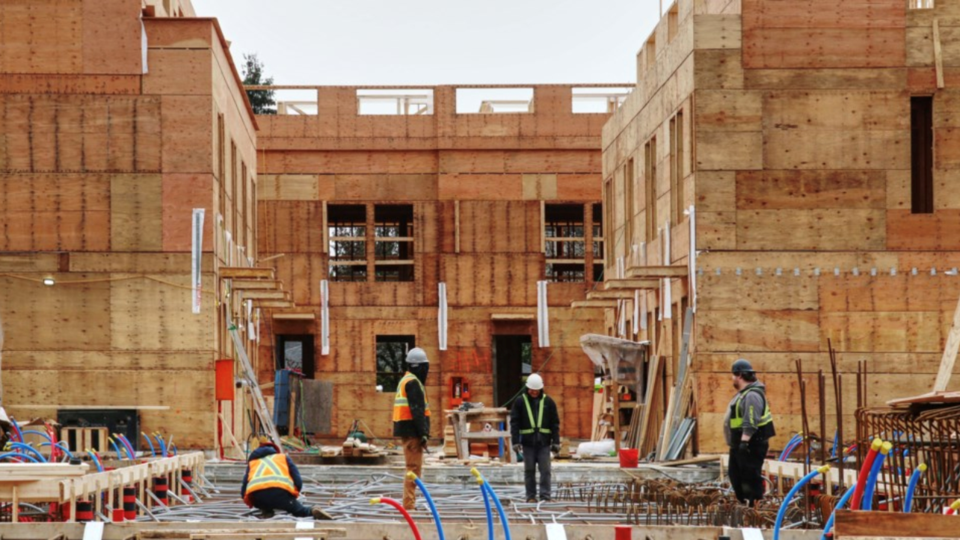When a local government adopts a new land use policy, it would be reasonable to think it has been financially tested and, on some level, offers a viable path to creating the type of housing it purports to allow. After all, what would be the point of spending time and scarce staff resources on plans that are unlikely to work or will ultimately hinder progress?
Unfortunately, this logic doesn’t prevail across vast parts of Metro Vancouver. Too often we find ourselves gifted with new policies that are entirely unfeasible, or that actually reduce the viability of building in areas that were previously designated for growth.
Consider, for example, the City of Vancouver’s response to new provincial Transit-Oriented Areas (TOA) legislation. To their credit, the planners in B.C.’s largest and most complex city responded to the province’s tight timeline with what is so far the most comprehensive – if necessarily broad – set of TOA rezoning guidelines.
However, when councillors probed further, the city’s planning department admitted that the proposed policies were too restrictive to make development feasible outside of a few select locations. By their own analysis, making development viable in the rest of the TOA-designated areas would require “significant height and density” beyond what was being proposed.
Essentially, the new rules were nothing more than window dressing. As we have seen over and over across the region, simply designating a property for higher density does not automatically make it a viable development site. Details matter.
Vancouver city Coun. Lenny Zhou summed it up succinctly: “What about those areas that are not very viable? Basically there will be no applications, no development. So what’s the point?”
Burnaby’s below-market housing requirements
In Burnaby, a similar issue unfolded, but this time the roles of councillors and planners were reversed when staff recommended reducing a below-market housing requirement that has become a barrier to new supply. Staff pointed out that while the requirement had worked in a hot market, changes were necessary to keep up with Burnaby’s housing needs and allow developers to continue to deliver below-market homes in current conditions.
Councillors apparently knew better. Without any financial analysis of their own, they amended the motion to push the below-market requirements back up, a result that Burnaby’s general manager of planning and development, Ed Kozak, described as “creating a bylaw which does not have financial viability.”
While these inclusionary housing policies are well-meaning, for any of the desired housing to be built, the overall development must be profitable. When the required percentage of below-market units is set too high, the project as a whole becomes unfeasible. The simple truth remains: 20 per cent of zero is – as it’s always been – zero.
Again – what is the point?
Developer cost charge increases loom
The foregoing examples highlight ineffective decisions arrived at when sound analysis is ignored – a waste of staff time and resources on policies that are likely to see few projects move forward. Metro Vancouver’s development cost charge (DCC) increase, which is set to take effect on Jan. 1 and ratchet up over the next two years, on the other hand, is punishingly destructive.
The regional government’s own third-party analysis concludes “the financial viability of market rental apartment development is marginal under current market conditions in most locations throughout Metro Vancouver at the current DCC.” Increasing DCCs, the analysis shows, is anticipated to reduce the number of projects that are viable, slow the delivery of new rental supply and trigger higher rents for projects that do make it to occupancy.
These are crippling outcomes for a region already facing a severe rental housing shortage.
Yet, even knowing the negative effects of their intervention, a disturbing number of planners and politicians seem happy to rationalize regulations that work counter to the stated goal. As Storeys reported recently, a high-ranking official within Metro Vancouver’s policy and planning department explained that the negative outcomes of the DCC financial analysis applies only to a specific point in time. As we know, the market can change – what is not profitable today, may at some point become viable – presumably after rents rise and affordability worsens.
It’s a baffling response in a crisis, where all three levels of government espouse their desire to see more rental housing get built.
Déjà vu all over again
We have learned these lessons before. Numerous community plans across the region—such as Grandview-Woodland and Marpole—have failed to deliver anywhere near the level of housing originally anticipated, even decades after their introduction.
Still, instead of adopting policies that work today and adjusting in the future as conditions change, this group of politicians and bureaucrats are knowingly creating unviable programs and hoping at some point, possibly years down the road, market conditions will turn in their favour.
So … what is the point?
Mark Goodman and Ian Brackett are brokers at Goodman Commercial, which specializes in the sale of rental apartment buildings and development sites in Metro Vancouver. They also publish The Goodman Report.

